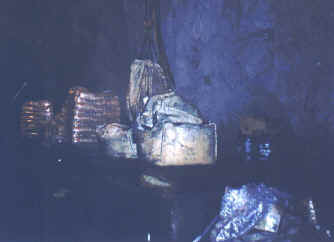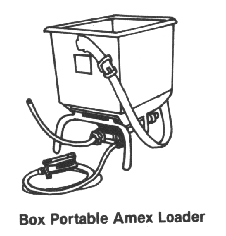Mining in Manitoba
ANFO Explosives
Mining Systems
In 1955 it was discovered that mixtures of ammonium nitrate and fine coal dust would give very satisfactory blasting results in the large (about 22.5-centimetre, 9-inch) holes used in open-pit coal mines to remove the rock and soil covering the coal. Polyethylene bags for this material both stretched to fill the holes and provided a moderate amount of water resistance.

Shortly thereafter ANFO was evaluated in the open-pit iron mines of Canada and the United States, with a high degree of success. From there ANFO spread to other open pits, such as copper, and to construction work such as road building. It was then found that the mixture could be air blown into holes 5 centimetres in diameter, or even smaller, with excellent results. This led to its adoption in many underground mines.
ANFO applications were based on prilled rather than crystallized ammonium nitrate. Prills, or free-flowing pellets, were developed for the fertilizer market, which requires a coarse product that has little tendency to set and can be spread easily and smoothly. A small amount of kieselguhr is generally added to improve the flowing properties. Prills are made by allowing droplets of ammonium nitrate that is almost molten to fall freely from a high tower. When they reach the bottom, they are dry and solidified, and slightly porous, which allows them to absorb and hold a greater amount of oil and gives a more sensitive product. ANFO is almost universally prepared by mixing 94 percent of prills with 6 percent of No. 2 fuel oil. The latter imparts some water resistance and, if that is not enough, polyethylene bags can often be used to give the necessary protection.

Liquid Oxygen
Nitrocellulosic
Nitroglycerin
Nitro Starch
Nitromon
Water Gels